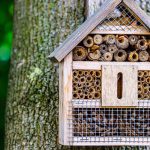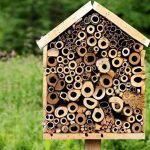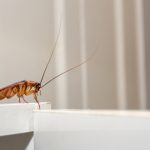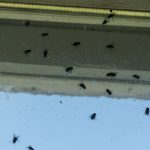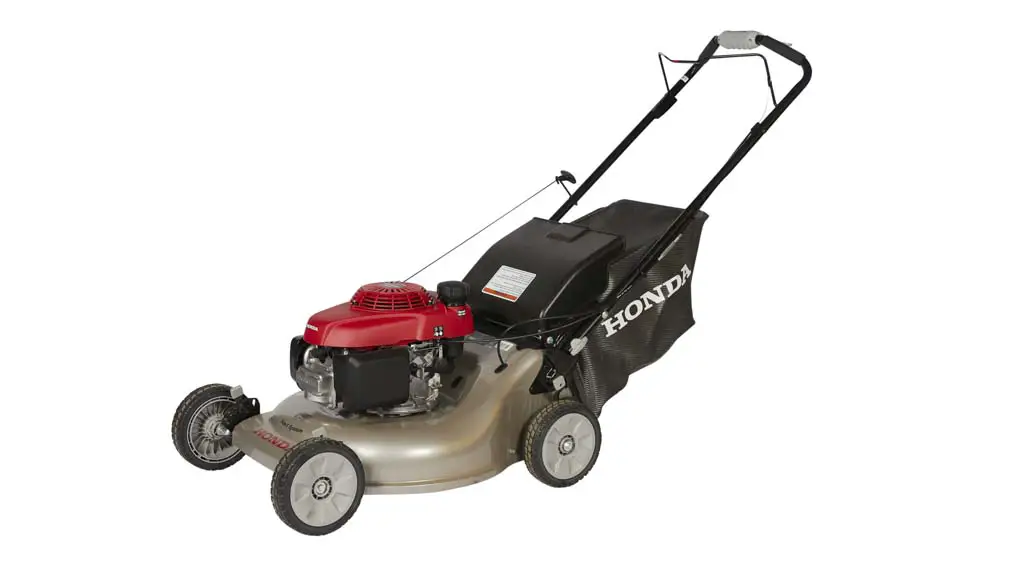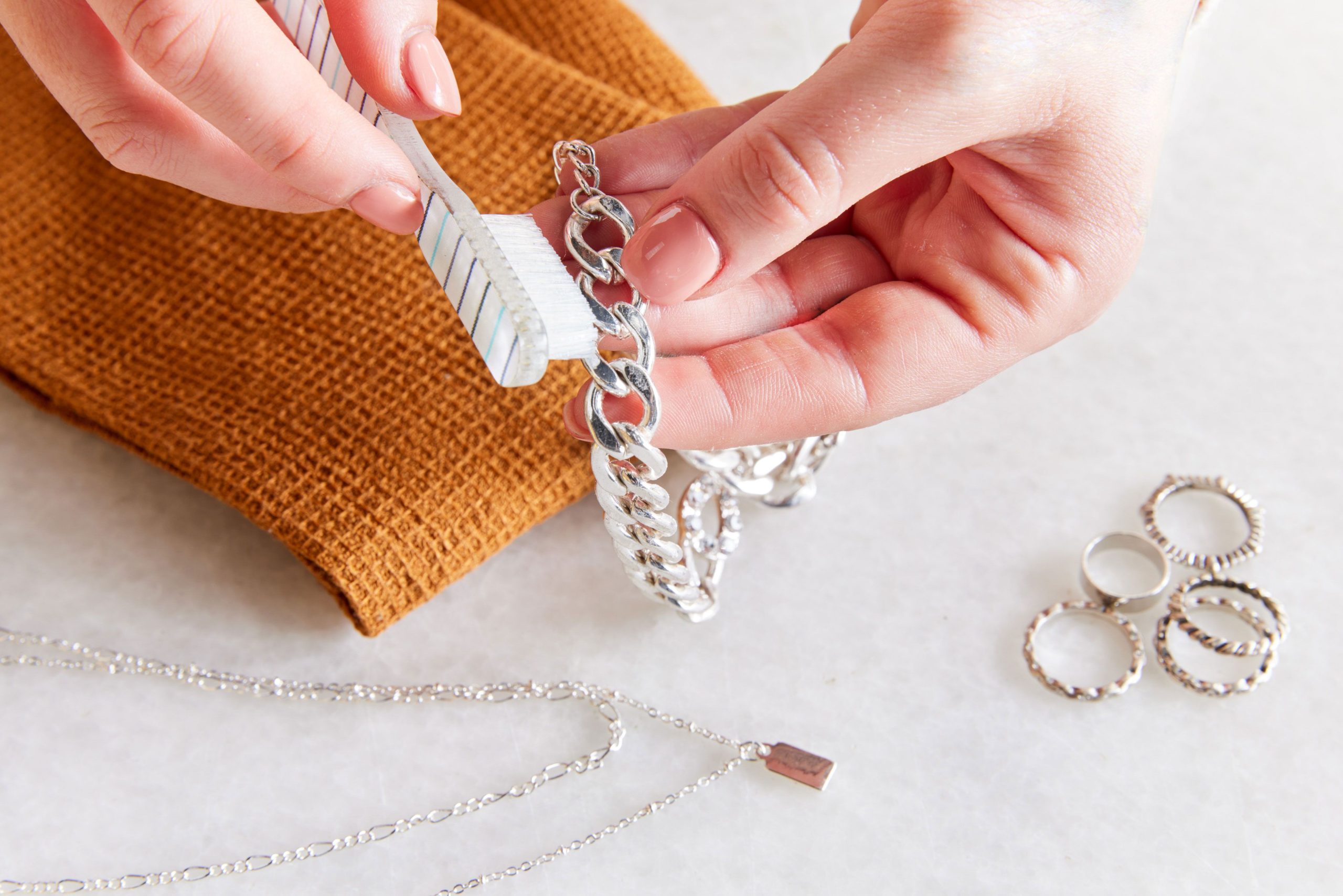How To Make An Insect Hotel?
To make an insect hotel, you will need: -A container (such as a milk carton or plastic container with holes punched in the sides) -Straws, sticks, and leaves
-Moss and/or dirt – Rocks – A piece of cloth or burlap
1. Cut the top off of your container, if using a milk carton. Punch holes in the sides of your container, if using a plastic container. Make sure the holes are big enough for insects to fit through.
2. Fill the bottom of the container with straws, sticks, and leaves. Add moss and/or dirt on top.
3. Place rocks on top of the moss and/or dirt so that it is slightly elevated. This will help keep your insects warm in the winter months.
4. Cover the top of the container with a piece of cloth or burlap secured with a rubber band or string.
- Gather materials
- You will need a container of some sort (a milk carton or soda bottle works well), straws, sticks, leaves, and bits of bark or moss
- Make holes in your container
- Punch or cut small holes into the sides of your container
- These will be the entranceways for your insects
- Stuff your hotel with materials
- Pack the straws, sticks, leaves, and bark into the container
- Be sure to leave some spaces empty so insects can move around inside
- Hang or place your hotel in a suitable location
- Insect hotels are often hung on trees or fence posts, but you can also place them directly on the ground in a shady spot in your yard
How to Make a Simple Bug Hotel
A bug hotel is a great way to provide a home for beneficial insects in your garden. By creating a habitat that meets their specific needs, you can encourage them to stay and help keep your garden healthy! Here’s how to make a simple bug hotel:
1. Choose a location. Your bug hotel should be situated in a sunny spot in your garden that is protected from the wind.
2. Create different levels. Insects need different types of homes, so create a multi-level structure using materials like cardboard tubes, bamboo canes, or pinecones.
3. Add some holes. Make sure there are plenty of openings of different sizes for insects to enter and exit. You can use a drill or knife to create these holes.
4. Fill it up! Now it’s time to add the material that will make up the insect hotels: sticks, leaves, stones, bark, and anything else you can find that will offer shelter and places to hide away. Be sure to pack everything tightly together so there are no gaps for insects to fall through.
5. Wait for guests! Once your bug hotel is all setup, wait for insects to move in!
What to Put in an Insect Hotel
If you’re looking to build an insect hotel, there are a few things you’ll need to take into consideration. First, what kind of insects are you trying to attract? Different insects will have different preferences for their accommodations.

Once you’ve determined what kind of insects you want to target, you can start collecting materials that will be suitable for them. Some common materials used in insect hotels include bark, twigs, leaves, and pine cones. You’ll also need something to serve as the structure of your hotel – this could be anything from a milk carton to a log cabin.
Once you’ve gathered all of your materials, it’s time to start assembly! Start by creating a base layer out of some of the larger pieces of bark or twigs. Then, add in layers of leaves and pinecones until your structure is full.
Make sure that each layer is loosely packed so that the insects can easily move through it. Once your hotel is complete, find a spot outside where it can remain undisturbed and wait for your new guests to arrive!
Why Insect Hotels Are Important For Your Garden
Insect hotels provide a habitat for insects, which in turn positively impacts the garden ecosystem.
By creating a welcoming environment, these miniature creatures can help promote healthy plant growth and help to keep pests at bay.
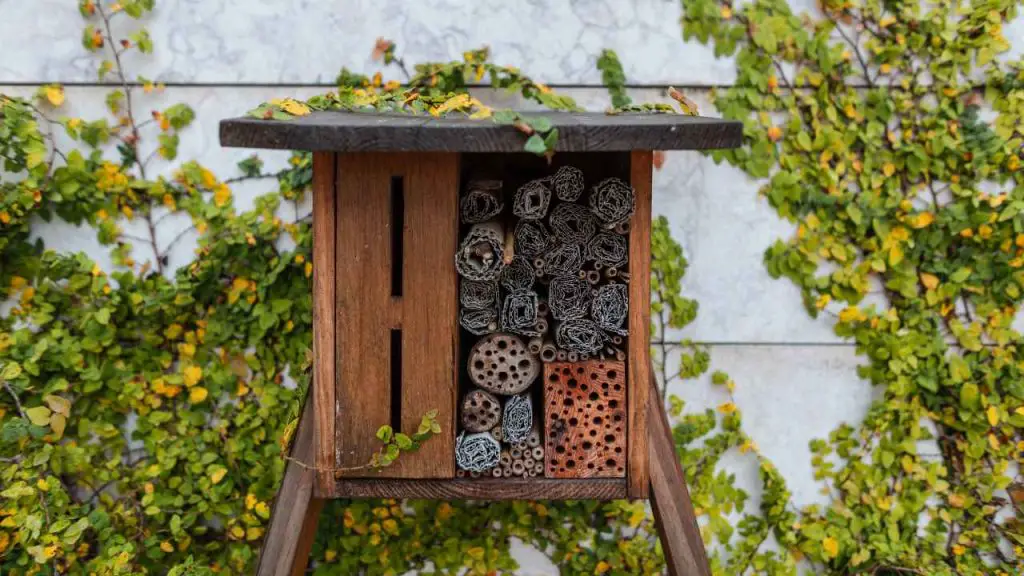
Here are some significant benefits of building an insect hotel in your garden:
- It supports garden diversity by encouraging native insects to live and reproduce in your garden.
- Insects living in your garden will help with pollination of plants, thus increasing fruit and flower yields in your garden.
- Many insects eat other insects that can damage your garden plants. Installing an insect hotel provides a safe haven for these helpful bugs while ensuring they stay in your garden.
- Insect hotels provide a means for education about the importance of biodiversity and can be used as a practical learning tool for kids.
How They Support Biodiversity And Pollination
Insect hotels support biodiversity as they provide a habitat for different species of insects.
As insects are essential pollinators, their presence in your garden also helps to support the environment by helping to pollinate plants.

Here’s how insects can support pollination in your garden:
- Bees, for example, are essential pollinators for over 75% of many crop types. Providing bees with a comfortable home encourages them to stay in your garden, enabling them to pollinate more flowers.
- Many other insects, such as butterflies, moths, beetles, and wasps, also aid in pollination. Providing them with a safe and welcoming habitat encourages their presence and promotes pollination.
Creating an insect hotel in your garden is an excellent way to promote biodiversity and support pollination. By providing insects with a comfortable home, you are encouraging their presence, which, in turn, will contribute to a healthier garden ecosystem, thriving with energy and vibrancy.
Step 1: Choosing The Right Location
What To Consider When Selecting The Ideal Spot For Your Insect Hotel
Insect hotels provide a safe space for beneficial insects to lay their eggs and shelter during the winter. However, selecting the right location is crucial for ensuring that the hotel will be fully utilized.

Here are some key points to keep in mind when choosing the perfect spot for your insect hotel:
- Choose a location that receives plenty of sunlight: Insects need warmth to thrive, so make sure the hotel receives at least six hours of sunlight a day.
- Place the hotel near plants: Insects need a nearby food source, so find a location near a garden or natural area with plenty of flowers and plants.
- Protect from harsh elements: Make sure the insect hotel is not exposed to strong winds, heavy rain, or direct sunlight. Insects need a safe and stable environment to survive.
- Avoid areas with pesticides: Insects are sensitive to pesticides and other chemicals, so avoid placing the hotel near areas that may have been treated with harmful chemicals.
- Consider accessibility: Make sure the insect hotel is easy to access for maintenance and inspection. You should be able to easily clean out the hotel and monitor the insect activity.
Best Practices For Proper Installation And Placement
Proper installation and placement are essential for ensuring that your insect hotel is effective and functional. Here are some best practices to keep in mind:
- Install the hotel at least 3 feet off the ground: This keeps it out of the reach of predators like cats and raccoons.
- Make sure the hotel is secure: Ensure that the hotel is firmly anchored and not in danger of falling over or shifting during inclement weather.
- Position the hotel facing south or southeast: This provides more sun exposure and warmth for the insects.
- Allow space between multiple hotels: Avoid overcrowding by placing the hotels at least 15 feet apart.
- Use natural and sustainable materials: Insect hotels are often made from natural materials like wood, bamboo, and clay. Using eco-friendly materials helps promote a sustainable environment for the insects.
By following these guidelines for location, installation, and placement, you can create a safe and comfortable habitat for beneficial insects to thrive. Just remember to monitor the hotel regularly and maintain it throughout the year.
Step 2: Materials Needed To Make Your Insect Hotel
Understanding The Key Components Of An Insect Hotel
An insect hotel is a structure designed to provide shelter, nesting, and hibernation sites for a wide range of beneficial insects. Here are the key components to consider when building an insect hotel:
- The frame: The frame of the insect hotel should be sturdy and able to withstand weather conditions. It could be made of wood, bricks, or stones, depending on your preference.
- Compartments: The insect hotel should have several compartments of different sizes and shapes, allowing various insects to nest.
- Filling material: Natural materials, such as straw, dried leaves, bamboo sticks, and wood wool, can be used to fill the compartments inside the insect hotel.
- Roof: An overhanging roof will prevent water from entering the nesting compartments, keeping the insects dry.
Recommendations For Materials To Use And Avoid
Choosing the right materials is crucial for building an insect hotel that will effectively attract insects. Here are some recommendations on materials to use and avoid:
- Use untreated natural materials: Avoid using any pressure-treated wood or chemically treated materials, as they can pose a threat to the insects’ health and environment.
- Choose a variety of materials: Different insects have various preferences in nesting materials. Providing various options such as bamboo, wood wool, and straw can attract different insects, and they will have a more significant chance of finding a place to nest.
- Avoid using materials that collect moisture: Organic materials like moss, hay, or grass may look suitable, but they can accumulate moisture and lead to mold, which can be problematic for insects.
- Use eco-friendly adhesive: If you use any adhesive while constructing an insect hotel, make sure it is environmentally friendly to avoid harming the insects.
Remember to consider that the insect hotel should be built in a sunny location, away from prevailing winds and animals that might cause damage. Following the guidelines above, you can create an insect hotel that is safe, attractive, and inviting for beneficial insects.
Step 3: Building Your Insect Hotel
Step-By-Step Guide To Constructing Your Insect Hotel With Photo Examples
Insect hotels are easy to build and can provide a safe haven for a variety of beneficial insects. Here is a step-by-step guide for constructing your own insect hotel.
- Choose your materials: You can use a variety of materials to build an insect hotel, including wood, bamboo, bricks, and stones. Choose materials that are natural, untreated, and preferably recycled.
- Plan the design: Before you start building, draw up a plan of your design. Think about the height, width, and depth of your insect hotel, and consider how you will attach it to a wall, fence, or tree.
- Construct the frame: Build a sturdy wooden frame for your insect hotel using 2x4s or other scrap wood. Make sure it is square and level, and securely attach it to your chosen surface.
- Add the compartments: Fill the compartments with a variety of natural materials, such as hollow sticks, straw, corrugated cardboard, pine cones, and bark. Fill each compartment with a different material, as this will attract a variety of insects.
- Add the roof: Once all the compartments have been filled, add a roof to protect the insects from rain and sun. You can use a variety of materials for the roof, such as clay tiles, slate, or wood.
- Place your insect hotel: Finally, place your insect hotel in a location that is sheltered from wind and rain, and make sure it is at a height that is easy to access for cleaning and inspection.
Building an insect hotel is an easy and rewarding project that will provide a safe habitat for beneficial insects. With just a little bit of planning and construction, you can help support the biodiversity of your garden or local environment.
Step 4: Adding Features To Your Insect Hotel
Incorporating amenities like nesting materials, shelters, and food sources:
Adding features to your insect hotel will attract a diverse range of insects to your garden. Here are some ways you can add features:
- Provide nesting materials such as dry leaves, twig bundles, or hollow stems. Insects like solitary bees will use these to create nests.
- Offer shelters such as small wooden blocks, bark, or rocks. Many insects look for dry, sheltered places to rest.
- Provide food sources like plants with nectar, pollen, or seeds. These will attract pollinators like butterflies and bees as well as other beneficial insects.
Tips for attracting specific beneficial insects:
Different insects have different needs, so it’s important to tailor your insect hotel to attract the ones you want. Here are some tips:
- To attract ladybugs, provide small sticks and dry straw for them to hide in.
- For lacewings, offer flat surfaces like pieces of bark or stones for them to lay their eggs on.
- To attract bees, provide holes of varying sizes in wood blocks, or bundle together bamboo or reeds.
Remember to keep your insect hotel clean and maintained to provide a safe and welcoming home for your garden’s beneficial insects.
Step 5: Maintenance And Care Of Your Insect Hotel
So, you’ve successfully created your very own insect hotel. Congratulations! But now, you might be wondering how to keep it in good condition and ensure that it continues to attract and shelter beneficial insects. In this section, we’ll cover some essential maintenance and care tips for your insect hotel.
How To Maintain And Regularly Clean Your Insect Hotel
Regular maintenance is key to keeping your insect hotel in excellent condition. Here are some key points to keep in mind:
- Regularly inspect your insect hotel to ensure that it’s not damaged or deteriorating. Repair or replace any broken or damaged materials as needed.
- Keep an eye on the nesting materials inside your insect hotel. Replace them if they’re too wet, moldy, or dirty.
- Regularly remove any dead insects or debris from the insect hotel. This will reduce the risk of the hotel becoming a breeding ground for pests.
- Consider adding some fresh nesting materials, such as straw or dried leaves, to your insect hotel every few months.
What To Do If You Suspect Pests Or Infestation
Unfortunately, even with regular maintenance, insect hotels can sometimes become infested with unwanted pests. Here are some tips for dealing with pest problems:
- If you notice signs of pests, such as cobwebs or small holes in the nesting materials, remove any affected materials and dispose of them properly.
- Consider adding some beneficial nematodes to the soil around your insect hotel. These tiny microscopic roundworms can help control pest populations naturally.
- If you’re dealing with a severe infestation, you may need to remove the entire insect hotel and replace it with a new one.
Overall, maintaining and caring for your insect hotel is relatively simple and straightforward. By following these tips, you can help ensure that your insect hotel remains a safe and welcoming home for beneficial insects for years to come.
How to Make a Bug Hotel for Kids
Are your kids always asking to go outside and play? Why not encourage their love of nature by building them a bug hotel? A bug hotel is a great way to get your kids engaged with the outdoors, and it can be a fun family project too!
Here’s how to get started:
1. Choose a location for your bug hotel. It should be in a shady spot in your yard where it won’t get too hot or too cold.
2. Start gathering materials! You can use anything from sticks and stones to leaves and pinecones. Get creative and see what you can find around your house or yard.
3. Build your hotel! Once you have all of your materials, start putting them together into a structure that will provide shelter for bugs. Stick the sticks into the ground, pile up the stones, and arrange the leaves so they form little tunnels and hiding spots.
4. Add some finishing touches. Once your bug hotel is built, add some extras like water dishes or food sources to attract even more insects. Then sit back and watch as all sorts of critters start moving in!
Do Insect Hotels Work
If you’re looking for a way to provide shelter for beneficial insects in your garden, you may be wondering if an insect hotel is a right solution. Insect hotels are often made from recycled materials and can be a great way to upcycle old items that would otherwise end up in landfill. But do they really work?
The answer is yes! Insect hotels can provide much-needed shelter for a variety of beneficial insects, including bees, ladybugs, and lacewings. These insects are important pollinators and predators of garden pests, so providing them with a safe place to stay can help keep your garden healthy and thriving.
When choosing an insect hotel, be sure to select one that is made from sturdy materials like cedar or bamboo. The structure should also have several different chambers of varying sizes to accommodate different types of insects. If you live in an area with harsh winters, you may want to consider adding a heater to your insect hotel so that it can stay warm enough for the occupants during colder months.
With a little bit of care and attention, an insect hotel can be a great addition to any garden – and it might just help save the planet!
How to Attract Insects to Insect Hotel
An insect hotel is a great way to attract insects to your garden or yard. By providing a safe place for them to stay, you can encourage them to visit and help with pollination or other tasks. Here are some tips on how to build and maintain an insect hotel:

1. Start with a base of straw, dried leaves, or wood chips. You can also use hollow stems from plants like bamboo.
2. Add in some sticks, twigs, and small rocks for the insects to climb on and hide in.
3. Make sure the hotel is situated in a sunny spot near some flowers or other plants that the insects will want to visit.
4. Check on your hotel regularly to make sure it’s still in good condition and add more materials as needed.
How to Make a Bug Hotel from a Pallet
If you’re looking for a fun and easy project that will help your garden thrive, look no further than a bug hotel!
A bug hotel is simply a structure that provides shelter and habitat for beneficial insects like bees, ladybugs, and lacewings. These insects are essential for pollination and natural pest control, so by providing them with a home in your garden you’re helping to create a healthy ecosystem.
Best of all, you can make a bug hotel from an old pallet in just a few simple steps. Start by removing any nails or staples from the pallet. If the pallet is particularly dirty or weathered, give it a good scrub with some soapy water to remove any debris.
Once the pallet is clean and dry, use a saw to cut it into pieces of various sizes. You’ll want some large pieces for the main body of the hotel, as well as smaller pieces for filling in gaps. Now it’s time to start assembling your bug hotel!
Begin by attaching the larger pieces of wood to one another using screws or nails. If you’re using screws, pre-drill holes to avoid splitting the wood. Once the main frame of the hotel is complete, start filling in gaps with smaller pieces of wood or other materials like stones or bark chips.
Leave some spaces open for insects to enter, and try to create different chambers of varying size and shape within the overall structure. The more variety you can provide, the more types of insects will be attracted to your bug hotel! Once your bug hotel is complete, find a suitable location for it in your garden and give it a good soak with some water.
Then sit back and wait for your new insect guests to arrive!
How to Make a Bug Hotel Out of Cardboard
Looking to add some fun and excitement to your garden while also helping out some of our six-legged friends? If so, then you should consider building a bug hotel! Not only are they a great way to attract pollinators and other beneficial insects, but they can also be made completely from recycled materials.
In this blog post, we’ll show you how to make a bug hotel out of cardboard that’s both eco-friendly and budget-friendly. The first step is to gather all of the materials you’ll need. For the structure of the bug hotel, you’ll need some cardboard boxes or tubes.
You can often find these for free at local stores or businesses that are getting rid of them. Once you have your cardboard, cut it into pieces that will fit together to form a small house or condo complex for your bugs. Be sure to include some ventilation holes so they can come and go as they please.
Next, it’s time to start filling your bug hotel with all sorts of goodies! Bugs love places where they can hide away from the elements, so try adding in some shredded paper or dry leaves. You can also add sticks or twigs for them to climb on, as well as stones or pebbles for drainage.
Get creative and mix and match different materials until you have a nice variety for your little guests. Once your bug hotel is all put together, find a spot in your garden where it will get plenty of sun and rain exposure. Then sit back and wait for the bugs to move in!
How Do You Make a Simple Bug Hotel?
If you’re looking to create a home for local wildlife in your backyard, one way to do it is by building a bug hotel. A bug hotel is a structure that provides shelter and nesting sites for insects, spiders and other small creatures. By creating a bug hotel, you can provide a valuable habitat for these animals while also making your garden more biodiverse.
Plus, it’s a fun project to do with the kids! Here’s how to build a simple bug hotel:
1. Start with a base of untreated wood, bricks or stones. You want something that will provide good drainage and won’t rot easily.
2. Create different chambers within your base using straws, sticks, pinecones, shells or anything else that will provide nooks and crannies for bugs to nest in. Make sure there are spaces of different sizes so that different types of insects can find homes in your hotel.
3. Place your bug hotel in an area that gets some sun but is also sheltered from wind and rain. This will give the inhabitants the best chance of survival.
4. Once your bug hotel doesn’t look too inviting to humans anymore (i..e., it’s filled with dirt and cobwebs), congrats!
You’ve successfully created a home for local wildlife!
What Do You Need to Build an Insect Hotel?
An insect hotel is a structure that provides shelter and nesting sites for beneficial insects, such as bees, ladybugs, and lacewings. These hotels can be as simple or elaborate as you like, but there are a few things to keep in mind when building one. First, consider what kind of insects you’d like to attract.
Different species have different habitat requirements. For example, solitary bees nest in small cavities, while social bees like honeybees need larger spaces. You can find plans for specific types of insect hotels online or in gardening catalogs.
Once you know what kind of insects you’d like to target, it’s time to start collecting materials. Most importantly, you’ll need a variety of sizes and shapes of hollow tubes or reeds. Bamboo is a good option, but you can also use PVC pipe, paper towel rolls, or even straws.
Just make sure the tubes are at least four inches long and have smooth walls so the insects can easily climb in and out. To provide additional shelter and insulation, fill the bottom of your insect hotel with straw, leaves, grass clippings, or wood chips. Then start adding your tubes – pack them tightly together so there are no gaps for drafts to come through.
Finally, top off your hotel with more insulation material before putting on the lid (if using one). Now that you know how to build an insect hotel, it’s time to get started! These structures make great DIY projects for both adults and kids – they’re fun to build and help support local ecosystems.
What Wood is Best for Insect Hotels?
There are a variety of woods that can be used for insect hotels, but some are better than others. Softwoods like cedar and redwood are good choices because they’re lightweight and easy to work with. Hardwoods like oak and maple are also good choices because they’re durable and rot-resistant.
Insect hotels can be made from a single piece of wood or multiple pieces of wood glued or screwed together. If you’re using multiple pieces of wood, make sure the joints are tight so insects can’t get inside the hotel.
What Do You Use for an Insect Hotel?
There are a few things you need for an insect hotel: First, you’ll need a structure. This can be anything from a recycled milk carton to a purpose-built wooden box.
Make sure it has plenty of ventilation holes so the insects can breathe. You can line the inside with paper or cardboard to make it more comfortable for them. Next, you’ll need something for the insects to live in.
This could be hollow bamboo sticks, rolled-up newspaper, or even just some dead leaves and twigs. Anything that provides nooks and crannies for them to hide in will do. Finally, you’ll need to provide a food source for your guests.
This could be anything from fruit peelings to honeydew melon slices. Just make sure whatever you offer is fresh and clean – otherwise you might attract some unwelcome critters!
Frequently Asked Questions For How To Make An Insect Hotel?
What Is An Insect Hotel?
An insect hotel is a natural shelter designed to attract insects for pollination and pest control.
Why Do You Need An Insect Hotel?
Insect hotels attract beneficial insects to your garden, which helps with pollination and natural pest control.
What Materials Are Needed To Make An Insect Hotel?
You will need a variety of natural materials such as bamboo, logs, bark, and straw to make an insect hotel.
What Insects Will An Insect Hotel Attract?
Insect hotels can attract a range of beneficial insects such as ladybugs, solitary bees, and lacewings.
Where Should You Place An Insect Hotel?
Place your insect hotel in a sunny and sheltered location off the ground, away from any pesticide use.
How Do You Maintain An Insect Hotel?
Maintain your insect hotel by regularly cleaning and replacing the materials used, and providing fresh nesting materials.
Conclusion
An insect hotel is a great way to provide shelter for beneficial insects in your garden. You can make one yourself with a few simple materials. First, choose a container that will be big enough for the insects you want to attract.
A milk jug or plastic container with holes punched in the sides works well. Fill the container with materials that will offer different types of shelter, such as straws, leaves, sticks, and pinecones. Be sure to pack the materials tightly so that there are no gaps for pests to enter.
Hang or place your insect hotel in a sheltered spot in your garden, and wait for the insects to move in!

“My name is Leo Jacob, and I hold a Bachelor of Science degree with Honors in Applied Environmental Science and Sustainability from the University of the West of Scotland. Since childhood, I’ve been passionate about living an eco-friendly life. After completing my studies, I dedicated myself to finding simple ways to lead a more environmentally conscious lifestyle. I launched ecolifely.com to share my educational background and practical experiences with everyone, hoping to inspire others to join me in creating a greener, more sustainable world.”


